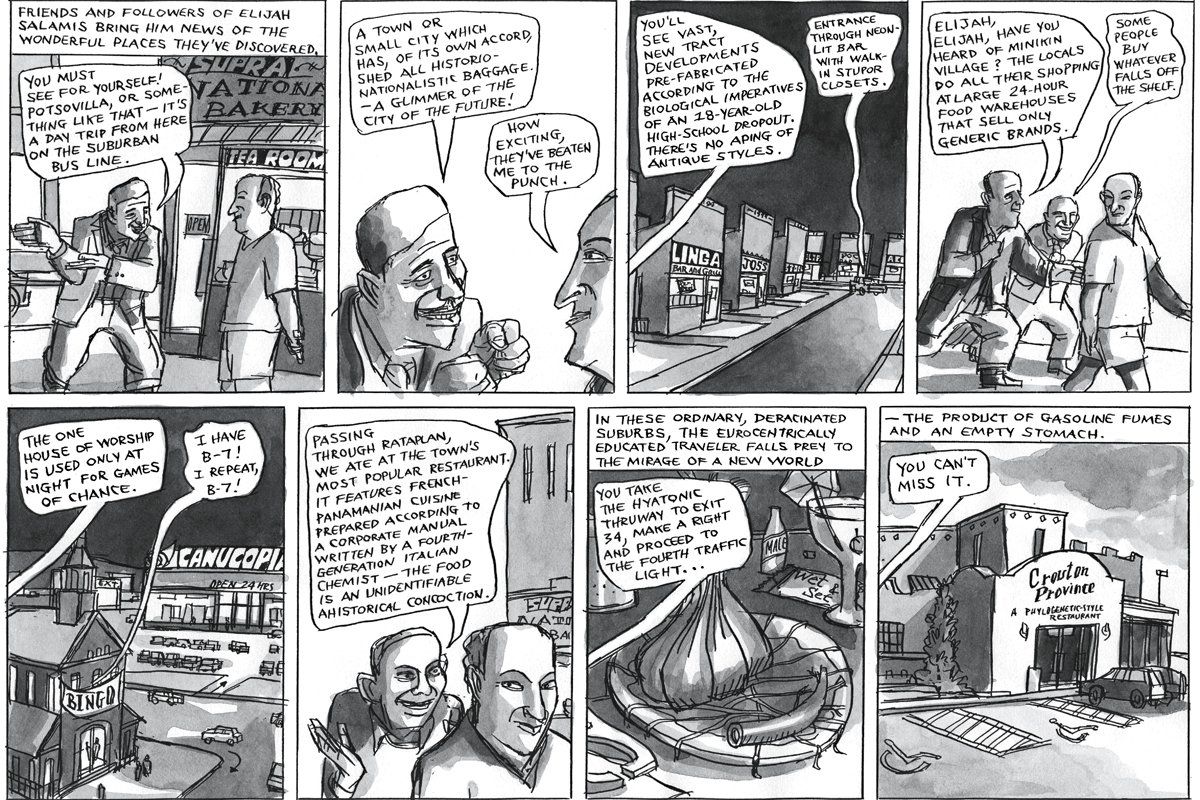
Window shopping with comics artist Ben Katchor through what he calls the "cheap merchandise district" in midtown Manhattan is a little like tumbling into one of Katchor's strips: history, humor, and a generous dose of surrealness combine to make you think you're walking down the back streets of Oz. This area south of Times Square was once New York's toy district, but now toys have been elbowed out by merchants and wholesalers peddling everything from cut-rate purses to men's hats, hand-rolled cigars, exotic soaps, bongs, and wristwatches with faces the size of coasters. It is a bazaar, a souk, an open-air temple celebrating cheap desire.
The ever-morphing metropolis that emerges on today's tour accounts for a big chunk of the world so vividly captured over the last three decades in Katchor comic strips such as Hotel & Farm, The Jew of New York, Shoehorn Technique, and especially Julius Knipl, Real Estate Photographer. Now comes his latest collection of comic strips—his first in 10 years—The Cardboard Valise, which is mostly set, appropriately enough, in a place called Fluxion City.
Katchor's picture stories seek out those insignificant but oddly memorable, often humorous aspects of city life—the business signs, the vagrant thoughts, and the unanswerable questions that dog and decorate the landscape of any urban dweller. Then he turns it all inside out, giving us his daydream of a city, eight panels at a time.
There's the men's clothing-store slogan "Look like a man … for less." The Mortal Coil Mattress Co. and the Cough Conservatory. And the nagging question at the lunch counter: "At what point in the war against disease were individually wrapped, sanitary drinking straws brought into play on the front line?"
Katchor is plainly steeped in the tropes of his craft, but ultimately he is uncategorizable, a man apart. Or, as he puts it, "You set up your own tradition for what a picture story is, and you live up to that."
The first comics creator to receive a MacArthur "genius" grant, Katchor nevertheless shrugs off the label of "artist." "Sometimes I make things that people have very strong responses to. Whether that's art, I don't know. That's one of those words that doesn't mean anything. It's why I don't just use words. One of the greatest things about this picture-story or comic-strip form, it can balance the two things. You can have a text commentary on what you see and then you can have a visual setting for where the words are, and that sort of puts it in this balance."
Katchor may shy away from the word "artist," but he does what every great artist does: clarifies things you knew but didn't know you knew, or didn't know how to articulate. Spend some time with his work, and then take a walk. You can't go a block without bumping into one of his people. That building up ahead, that little two-story sandstone edifice you pass every day on your way to work but never really looked at—with no light in the windows, no sign of life no matter the time of day, it could be a church, or a shuttered bank, or a fraternal lodge. But what it is more than anything is a Katchor building. He makes you see things his way.
Uncommon Knowledge
Newsweek is committed to challenging conventional wisdom and finding connections in the search for common ground.
Newsweek is committed to challenging conventional wisdom and finding connections in the search for common ground.
About the writer
To read how Newsweek uses AI as a newsroom tool, Click here.





